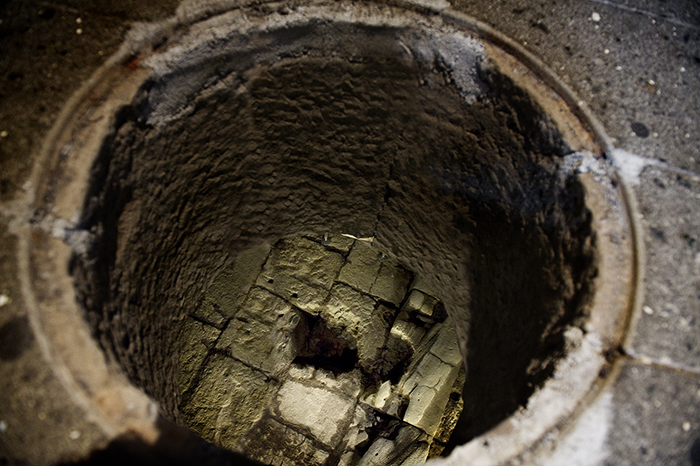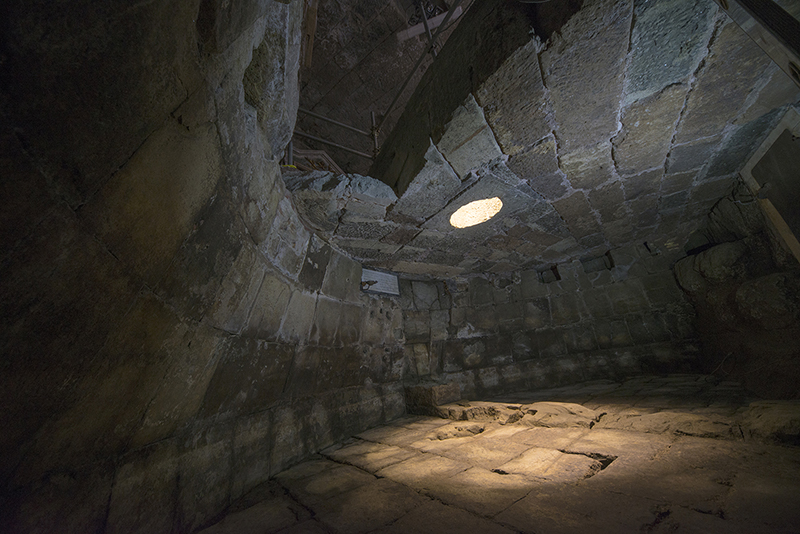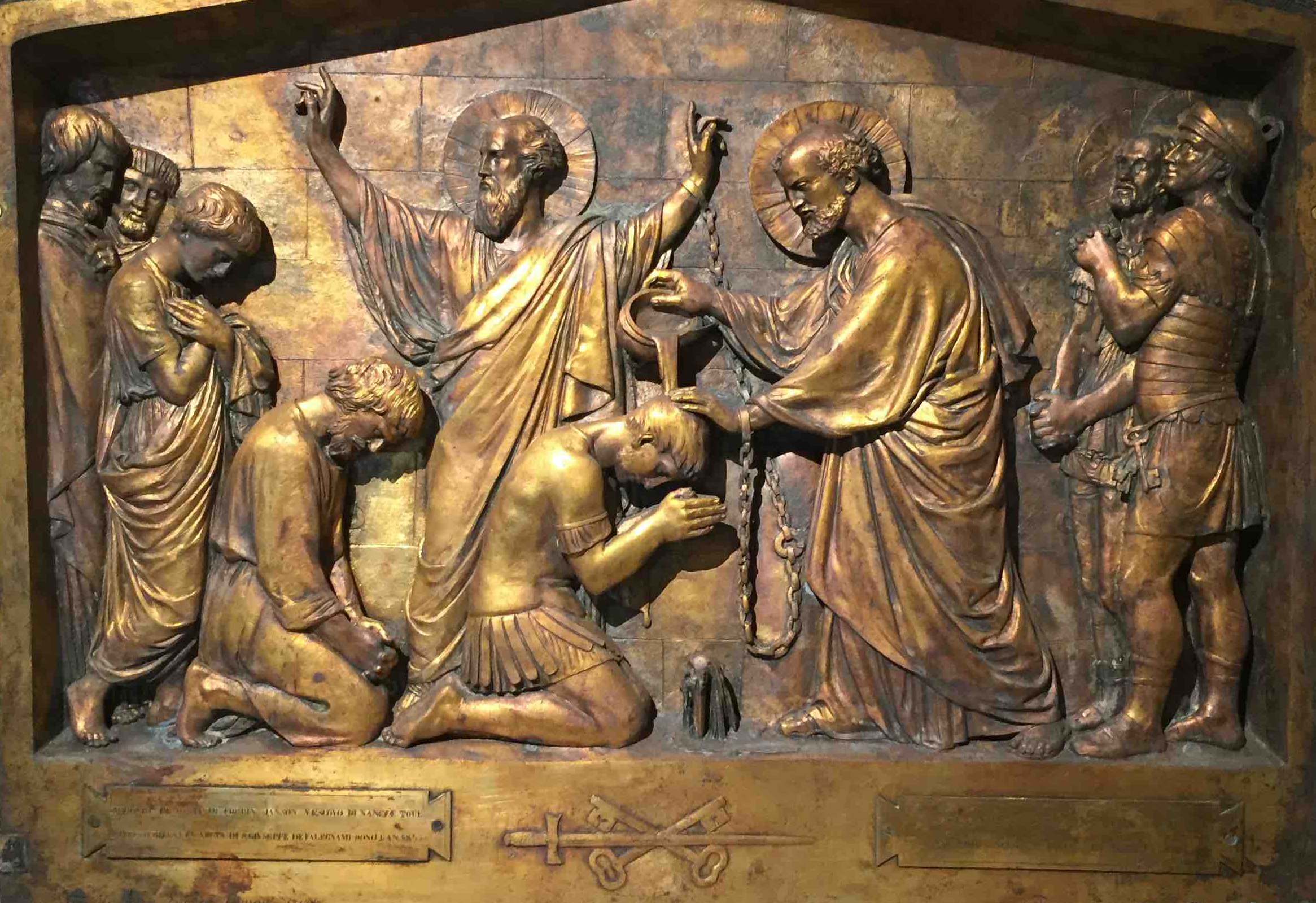ll Carcer Tullianum è il più antico carcere di Roma, per molti secoli prigione di massima sicurezza per i nemici di Roma in attesa di esecuzione.
Noto dal Medioevo anche come Carcere Mamertino, è il luogo dove, secondo la tradizione, gli Apostoli Pietro e Paolo vissero i loro ultimi giorni prima di essere martirizzati.
PUNTO D’INCONTRO
Carcere Mamertino, Clivo Argentario
INFORMAZIONI DI SERVIZIO
È possibile prenotare data e ora della visita. Il sito rispetta i seguenti orari di apertura:
Accessibilità: per ragioni logistiche il sito non è fruibile da persone con difficoltà di deambulazione.
AGEVOLAZIONI OGNI PRIMA DOMENICA DEL MESE:
Se acquisti il titolo d'ingresso direttamente presso il Carcere Mamertino verranno applicate delle riduzioni
Per ulteriori agevolazioni: tel +39 06 69896379
email: info@omniavaticanrome.org

The Mamertine Prison is a unique place reminding us of the implacable justice of Rome against its internal and external enemies.
Those who entered this prison never survived.
External enemies like Jugurtha, king of Numidia, first an ally and then an enemy of Rome, and Vercingetorix, the king of the Gauls defeated by Julius Caesar, lived their final days here.
Many Romans lost their lives here too, such as the followers of Catiline, the man who around the 1st century BC tried to unsuccessfully subvert the Roman Republic and in particular the power of the senatorial oligarchy.
This place is also remembered by the Christian tradition as the site where Saint Peter and Saint Paul and many other Christian martyrs,considered enemies of the Roman order because of their faith, lived their last days.
No doubt visiting the Mamertine Prison is an experience not to be missed.
hide
It consists of two levels one above the other, built on the southern slopes of Capitoline Hill near Roman Forum.
The deeper level, known as Tullianum, is the oldest, dated back to the 7th century BC and was built close to the Capitoline hill.
According to archeologist, the higher level, known as Carcer, was built a century later (6th century BC) but was restructured several times during the Republican period and the early Imperial period, when a great travertine façade was built to make the site well visible to the eyes of the city.
The prison’s position was strategic: placed at the foot of Capitoline Hill and in front of Forum, the centre of public life, it was a clear warning sign, the symbol of the implacable justice of Rome against its enemies.
Many historical figures were imprisoned here and were strangled to death or decapitated: including Jugurtha, king of Numidia in 104 BC and Vercingetorix, king of the Gauls in 46 BC.
Many historians describe the horror this place aroused and the awful suffering and humiliation inflicted on those fate brought here.
hide
The Acts of the Holy Apostles say that Peter and Paul, brought to trial before Nero, were imprisoned until the execution of their sentence.
Because of their position as undisputed charismatic figures of the Christian communities in Rome, according to tradition they were led to this same prison.
During their incarceration, the Apostles successfully converted their jailers Processus and Martinian and other inmates.
The two Apostles miraculously made a spring of water inside the prison and baptised them.
Their walk to martyrdom began from this same place: Peter’s towards the Circus of Nero, in the area of the Vatican Hill, and Paul towards the Aquae Salviae, on the Laurentina Road.
When the prison lost its function as place of incarceration, it became a place of faith: both the levels were converted to chapels and the devotion of the Apostles began. Researchers dated the transformation of the prison into a church (with the name of St. Peter in Prison) back to the 4th century by the will of Pope Sylvester I.
From other historical documents it emerges that Pope Paul I (757-767) had a church dedicated to Saints Peter and Paul built in Via Sacra.
A fragment of a fresco depicting the hand of a blessing God next to the figure of a saint, today still visible on a wall of the Tullianum, dates back precisely to the 8th century.
The transformation into a place of worship has allowed Carcer Tullianum (like Pantheon) to remain intact over the centuries without suffering the deterioration typical of other Roman monuments.
In the 16th century a new church dedicated to St. Joseph of the Carpenters was built over the prison together with a chapel dedicated to the Holy Cross that today allows the faithful to stop in prayer.
hide